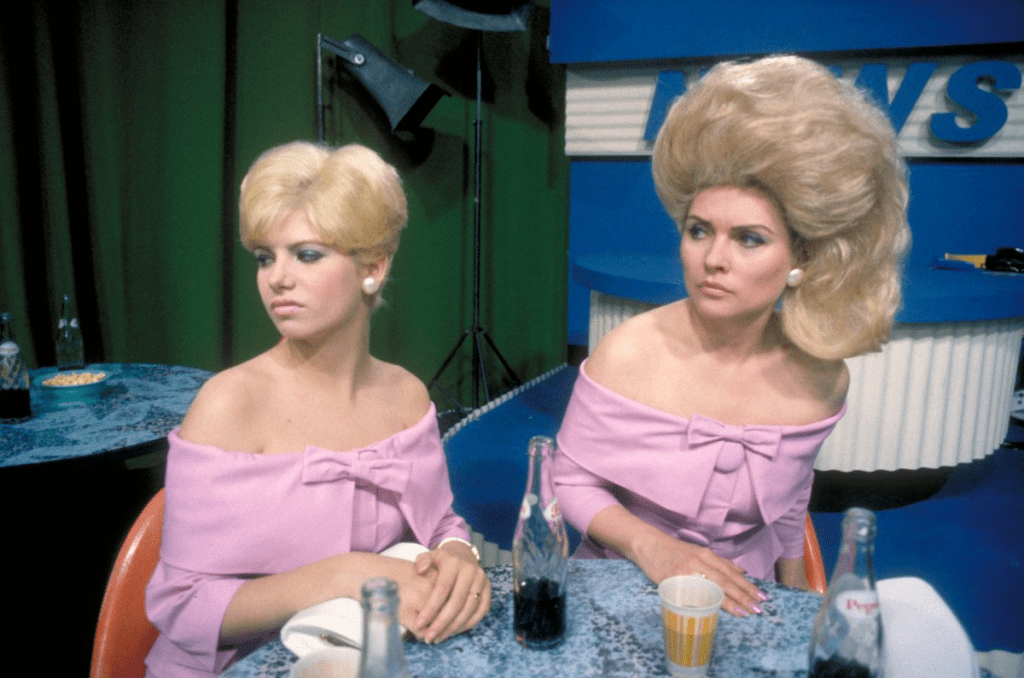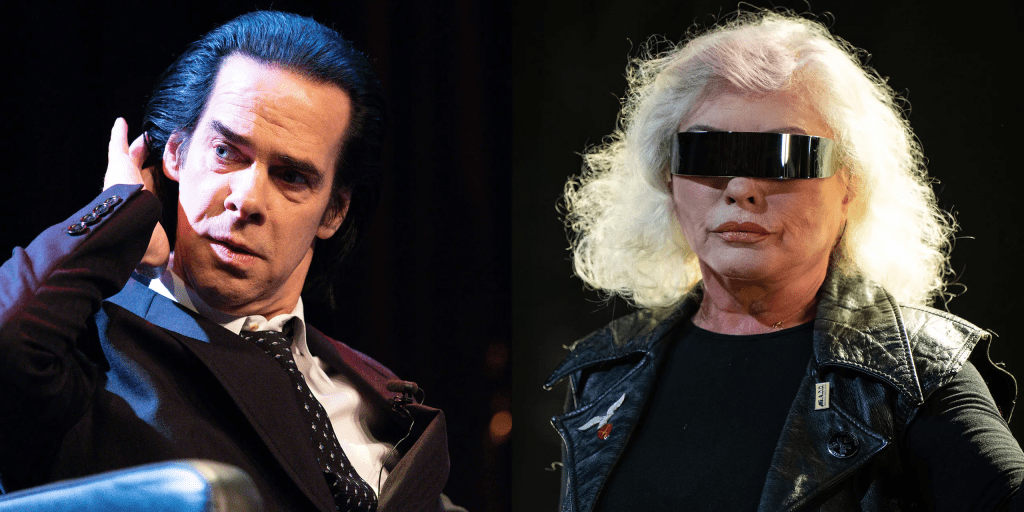Debbie Harry, the legendary frontwoman of Blondie, has captivated audiences for decades with her unique style, powerful voice, and undeniable charisma. As a pioneer of the punk and new wave scenes, she has left an indelible mark on the music industry and continues to be celebrated as an icon. From her early life and the formation of Blondie to her solo career and continued influence on music and culture, Debbie Harry’s story is one of resilience, creativity, and reinvention. In this comprehensive exploration, we delve into the life, career, and present-day experiences of Debbie Harry, tracing her evolution from a young artist with big dreams to a revered figure in the world of rock and roll.
Deborah Ann Harry was born on July 1, 1945, in Miami, Florida, and was adopted by Richard and Catherine Harry, who raised her in Hawthorne, New Jersey. Her upbringing was marked by a love for music and the arts, with Debbie developing an interest in singing from an early age. She attended Centenary College in Hackettstown, New Jersey, but it wasn’t long before she was drawn to the vibrant energy of New York City.

In the 1960s, Debbie made the move to New York, initially working various jobs, including a stint as a secretary, a waitress, and even as a Playboy Bunny. During this period, she began exploring the underground music scene, immersing herself in the world of art and music that thrived in New York’s East Village. The eclectic and bohemian atmosphere would have a lasting impact on her artistry, setting the stage for her future as a musical trailblazer.
In 1974, Debbie Harry met guitarist Chris Stein, and together, they formed the band that would go on to define an era: Blondie. Along with drummer Clem Burke, keyboardist Jimmy Destri, and bassist Gary Valentine, Blondie quickly became known for its unique blend of punk, new wave, and pop influences. With Debbie’s striking voice and magnetic stage presence, the band developed a dedicated following in the underground music scene, performing at iconic venues like CBGB and Max’s Kansas City.
Blondie’s first two albums, Blondie (1976) and Plastic Letters (1977), established the band as a force to be reckoned with, but it was their third album, Parallel Lines (1978), that catapulted them to international fame. Produced by Mike Chapman, Parallel Lines featured hit singles like Heart of Glass, One Way or Another, and Hanging on the Telephone. The album’s genre-blending sound, which combined elements of punk, disco, and pop, resonated with a wide audience, making Blondie one of the most popular bands of the late 1970s and early 1980s.
The success of Parallel Lines marked a turning point for Blondie, transforming them from cult favorites into mainstream superstars. Debbie Harry’s distinct voice and edgy style became iconic, and she was celebrated as a symbol of the new wave movement. With her platinum blonde hair, striking looks, and fearless attitude, she became a fashion icon and a trailblazer for women in rock.
As Blondie reached the height of their success, Debbie Harry began to explore other creative avenues. In 1981, she released her first solo album, KooKoo, produced by Nile Rodgers and Bernard Edwards of Chic. The album, featuring the hit single Backfired, showcased Harry’s versatility as an artist, experimenting with a different sound and image. Although KooKoo received mixed reviews, it demonstrated her willingness to take risks and push the boundaries of her musical style.
In addition to her solo music career, Debbie Harry has also pursued acting. Over the years, she appeared in a number of films, including Videodrome (1983), directed by David Cronenberg, where she portrayed a dark and complex character that showcased her range as an actress. Her other notable film roles include appearances in Hairspray (1988), Tales from the Darkside: The Movie (1990), and Six Ways to Sunday (1997).

Throughout the 1980s and 1990s, Debbie continued to release solo albums, including Rockbird (1986), Def, Dumb & Blonde (1989), and Debravation (1993). Each project reflected a different aspect of her artistry, as she experimented with various musical genres and collaborated with different artists and producers. While these solo ventures did not achieve the same level of commercial success as her work with Blondie, they allowed her to grow as an artist and explore new creative directions.
In the late 1990s, Blondie reunited, much to the delight of their fans. The band released No Exit in 1999, their first album in 17 years, which included the hit single Maria. The song reached the top of the charts in the UK, proving that Blondie’s appeal had not waned, even after nearly two decades. This successful comeback led to a series of albums, including The Curse of Blondie (2003), Panic of Girls (2011), Ghosts of Download (2014), and Pollinator (2017).

Debbie Harry’s enduring influence on the music industry has only grown stronger over the years. Her ability to adapt to changing musical landscapes and continue creating relevant, compelling music is a testament to her talent and resilience. Blondie’s continued success serves as a reminder of the band’s impact on pop culture and their role in shaping the sound of modern music.
Debbie Harry has remained a prominent figure in the music world, collaborating with various artists and inspiring a new generation of musicians. Her work with Blondie paved the way for female artists in punk and rock, and her influence can be seen in the music and style of artists like Madonna, Lady Gaga, and Gwen Stefani. Throughout her career, Debbie has been praised for her ability to blend different musical genres and create a sound that is uniquely her own.
In recent years, she has collaborated with artists such as Nick Cave, Iggy Pop, and Joan Jett. These collaborations highlight her versatility as an artist and her willingness to experiment with different musical styles. Debbie Harry’s influence extends far beyond her work with Blondie, as she continues to inspire artists across various genres.

Debbie Harry’s life has been marked by both triumphs and challenges. Throughout her career, she has been open about her struggles, including her experiences with addiction and her journey to recovery. In her memoir, Face It, published in 2019, Debbie shared candid insights into her life, discussing her rise to fame, her relationship with Chris Stein, and the obstacles she has overcome.
In the 1980s, Chris Stein, her longtime partner and Blondie bandmate, was diagnosed with a rare autoimmune disease. Debbie stood by him throughout his illness, demonstrating her loyalty and resilience. This period was challenging for both her and the band, but they emerged stronger, with Debbie continuing to create music and pursue her passions.
Today, Debbie Harry remains active in the music and art worlds. She continues to perform with Blondie, and her passion for music is as strong as ever. Debbie’s iconic style and influence on pop culture are celebrated by fans around the world, and her legacy continues to inspire a new generation of artists.

In addition to her music, Debbie Harry is known for her activism and advocacy work. She is a passionate supporter of environmental causes and has been involved in various charitable initiatives. Her commitment to making a positive impact on the world reflects the same spirit of rebellion and individuality that defines her music.
Debbie Harry’s influence on the music industry and popular culture is undeniable. As the frontwoman of Blondie, she helped define the sound of punk and new wave, leaving a lasting impact on the world of rock. Her solo career and collaborations have showcased her versatility and creativity, while her resilience and commitment to her art have made her an enduring figure in the world of entertainment.

Debbie Harry’s journey is one of transformation and self-discovery. From her early days in the underground music scene to her continued success as a rock icon, she has remained true to herself and her vision. Her story serves as an inspiration to anyone who dares to follow their dreams, break boundaries, and embrace their unique voice.